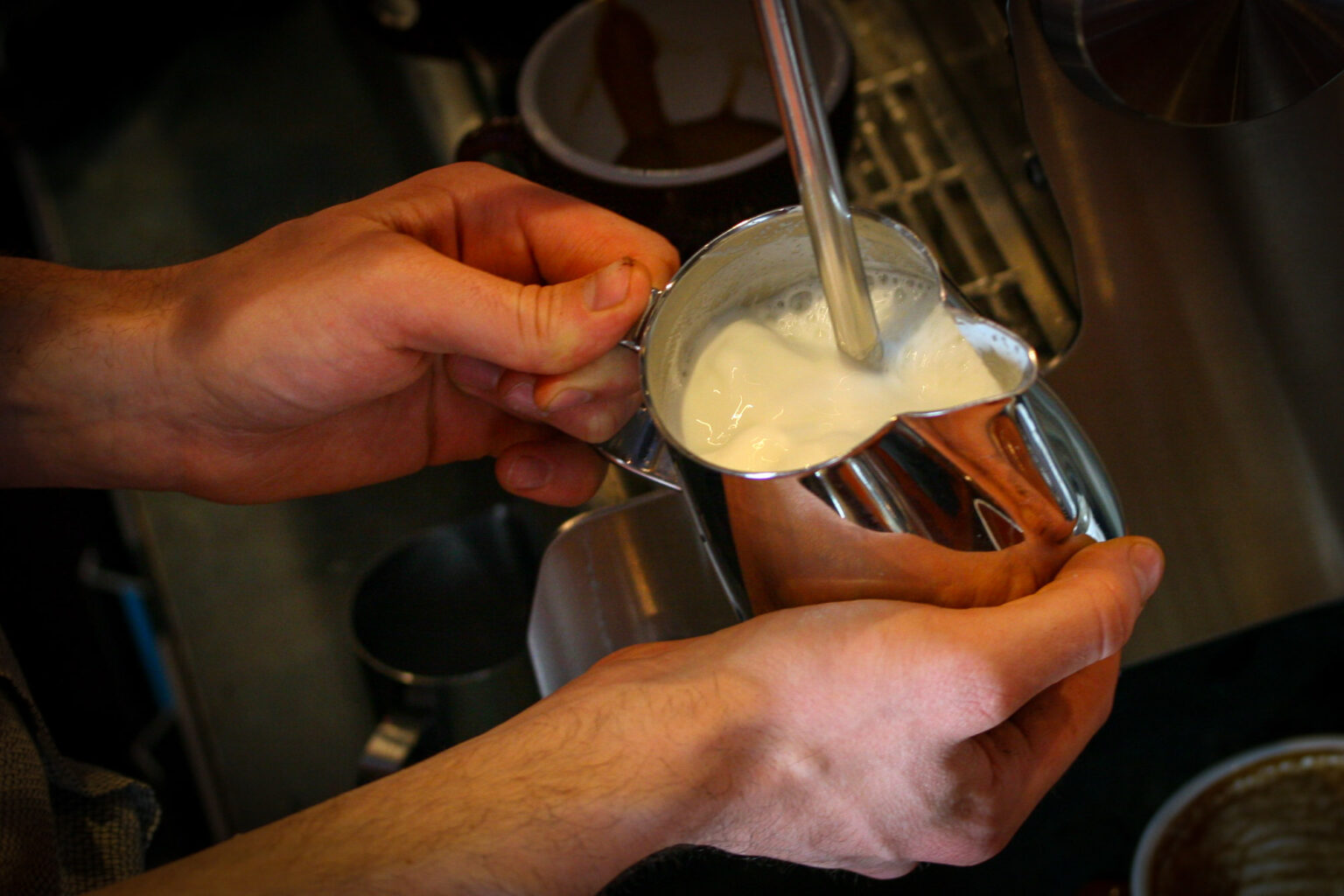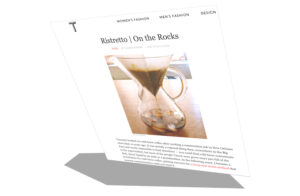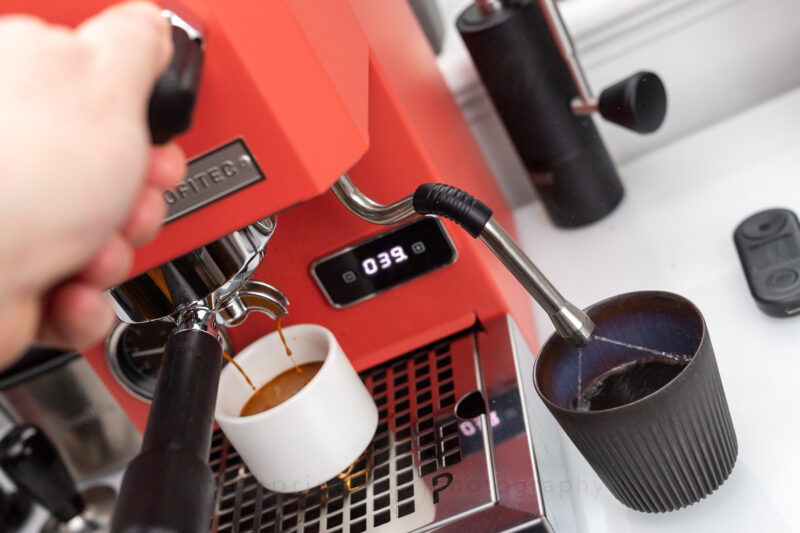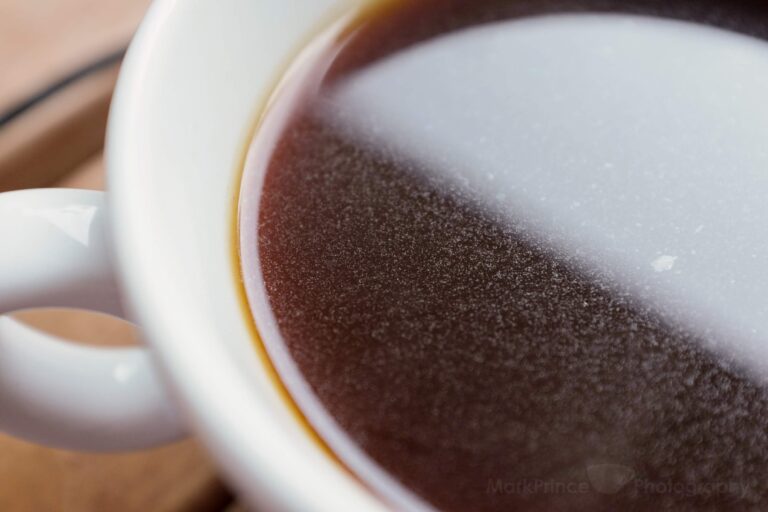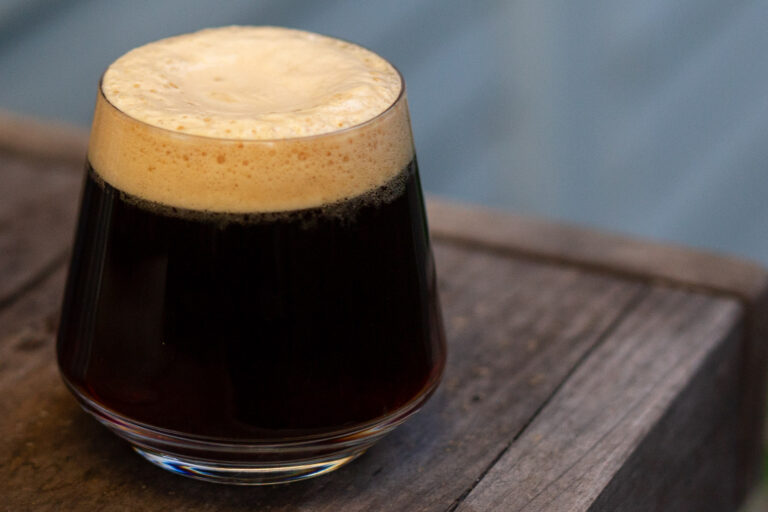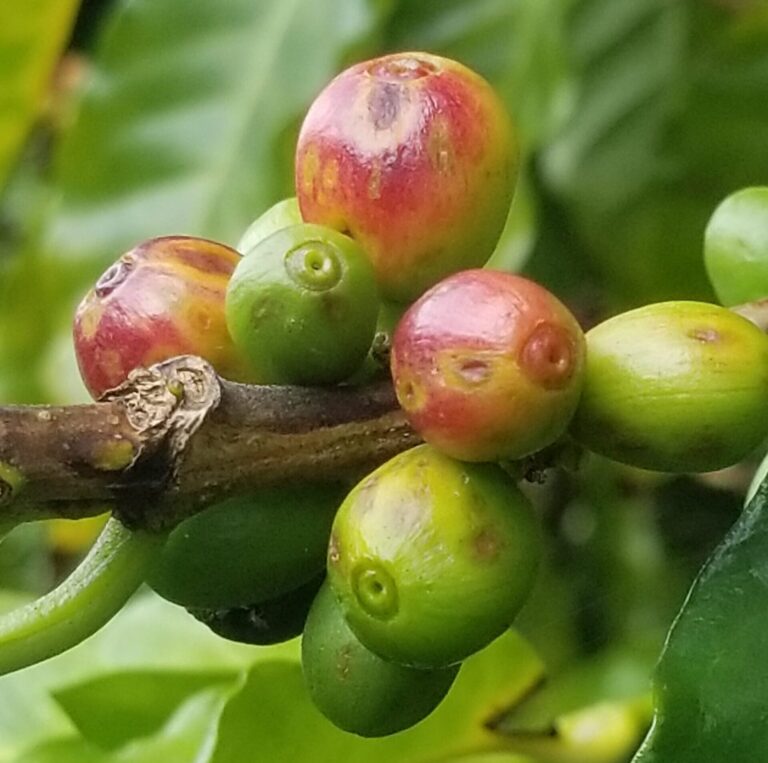Those of us who have worked as Baristas know this phrase all too well. It can be as short as: “Grande Latte, Extra Hot”; a bit more precise with: “Can I have my milk extra hot please”; or even a detailed explanation like “I have a long drive to where I’m going, so I need that milk to be extra hot so it lasts…”
And this is just regarding the milk in milky coffee drinks. It also happens in straight coffee brews too, but I’ll save that for another post.
I used to not care much one way or the other if someone wanted their milk extra hot in their coffee beverages, but eventually, a fellow barista (one who was keen on barista competitions) educated me and my tastebuds on the subject. Thereafter, I did care, because I cared about serving my customers a quality drink.
It’s something I learned nearly a decade ago, and it remains with me to this day: the chemistry, nuance, and absolute joys of properly steamed and foamed milk and what it brings to espresso. And just yesterday , I lined up for a macchiato at my local cafe and heard the person in front of me say “extra large latte, extra hot milk please”.
Hearing that, I was inspired to impart some of the lessons I learned, to you, the CoffeeGeek reader.
All About Milk
Raw milk – whole, unpasteurized milk – is a living entity still. Full of living antimicrobials and good bacteria. At its best, it is one of the most amazing things you can drink. Raw milk that is pure and non infected also has less impact on those with a lactose intolerance, asthma, autoimmune and allergic conditions. It’s jam packed with vitamins, minerals and fatty acids. I’ve had cappuccinos made with raw milk and they are on their own level of taste greatness.
But we rarely get to do so because of fears of whole, unpasteurized milk going bad, or being bad. Raw milk can carry dangerous bacteria such as salmonella, e. coli, listeria, campylobacter, and others. And there’s also the threat of things like tuberculosis, which can be transferred from infected cows.
So we drink milk that has been pasteurized. The process takes chilled raw milk, and rapidly heats it to 72C (161.6F) by passing it between heated steel plates, which then hold the milk for around 15 seconds at that temperature, before rapidly cooling the milk back down to 3.5C (about 38F). This rapid heating and cooling method has very little effect on the core elements of whole milk: lactose, fatty acids, casein, and whey. It also retains most of raw milk’s beneficial amino acids, vitamins and minerals.
I know what you might be thinking. As long as I stay under that 161F temperature when steaming milk for an espresso based drink, all’s going to be fine with my milk quality. But that would be wrong.
Steaming Milk for Espresso
The act of steam-heating milk for use in espresso drinks is very different from the processes used to rapidly heat (and then cool down) milk in pasteurization. When you steam milk, you’re actively impacting milk’s components with water gas in the form of steam, which is around 130C (265F) in temperature. You are also highly agitating the milk with the steam’s ongoing pressure release. The residual lasting heat also further introduces chemical changes.
All of these actions and circumstances heat the milk and its chemical components in a different way, and can cause a more rapid breakdown and conversion of milk’s elements.
For instance, the lactose can more rapidly convert into separate elements: lactulose (a non-digestible sugar that isn’t sweet to the tongue), carbon dioxide and alcohol. The fats in milk – short, medium, and long chain fatty acids – are affected too, with the long chain fats converting into short and medium ones. This affects taste quite a bit. Most importantly, you cause chemical changes and even phase-change points in the casein and whey elements, causing them to separate from the whole beverage, becoming their own elements. The higher the temperature is, the more you’re degrading the quality of the milk and its taste.
Fortunately, the standard temperature at which we steam milk for espresso based drinks – 63C or 145F – does not impart many chemical changes to the milk. The lactose is still sweet and present, the fatty acids are staying happy, and the proteins are intact and definitely doing their thing.

But if you take the milk up to even the temperature of pasteurization, or around 160F, or 71C via steam heating, you will be doing damage to the milk, and you can smell it: the all too familiar smell of whey cooking that comes from the steam pitcher once you start going past 155F.
Take milk all the way up to 165F (74C) and you are burning off the lactose; you are separating the proteins; you are burning off beneficial taste components and you are destroying beneficial vitamins and minerals. And it just does not taste good.
Don’t take my word for it: steam up two sample pitchers of milk. One to 145F and one to 165F. Let both cool down for 2 minutes and taste them.
And that’s the real tale here: ignore the science, chemistry and such, and just go by what your senses tell you, both in taste and smell. Milk steamed to 165F or higher simply does not smell good, and definitely doesn’t taste good. But milk steamed to 145F or lower tastes great, and at that temperature, the sweetness of the lactose, sitting gently in the milk’s foam (which is at an even lower temperature) is present and accounted for.
Now who are you or I to tell someone they can’t have their espresso based milky drink “extra hot”. Well I do hope now you are someone with the knowledge and experience to at least tell them it will taste much better if they get that cappuccino, macchiato or latte at “normal” heated milk temperatures.

